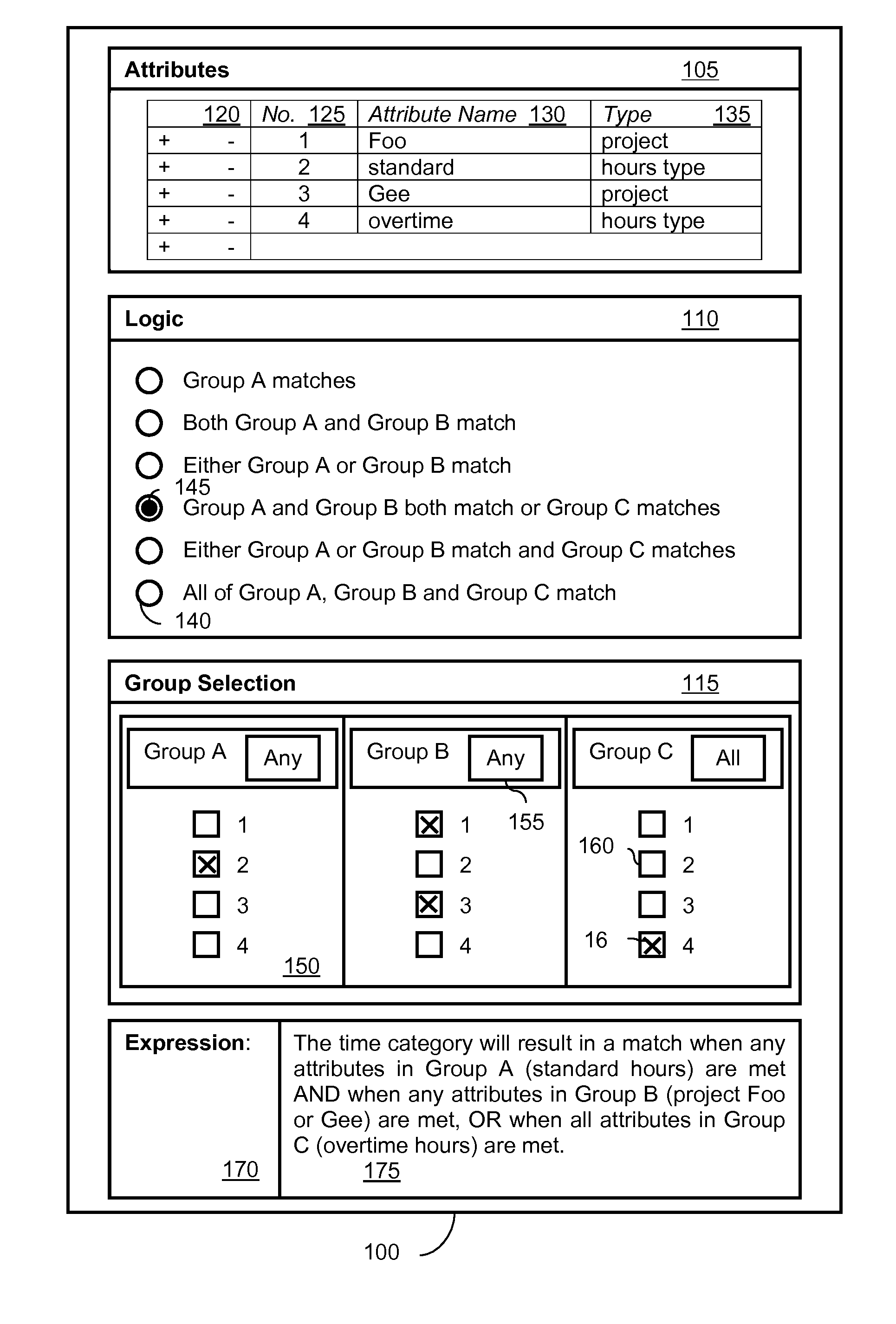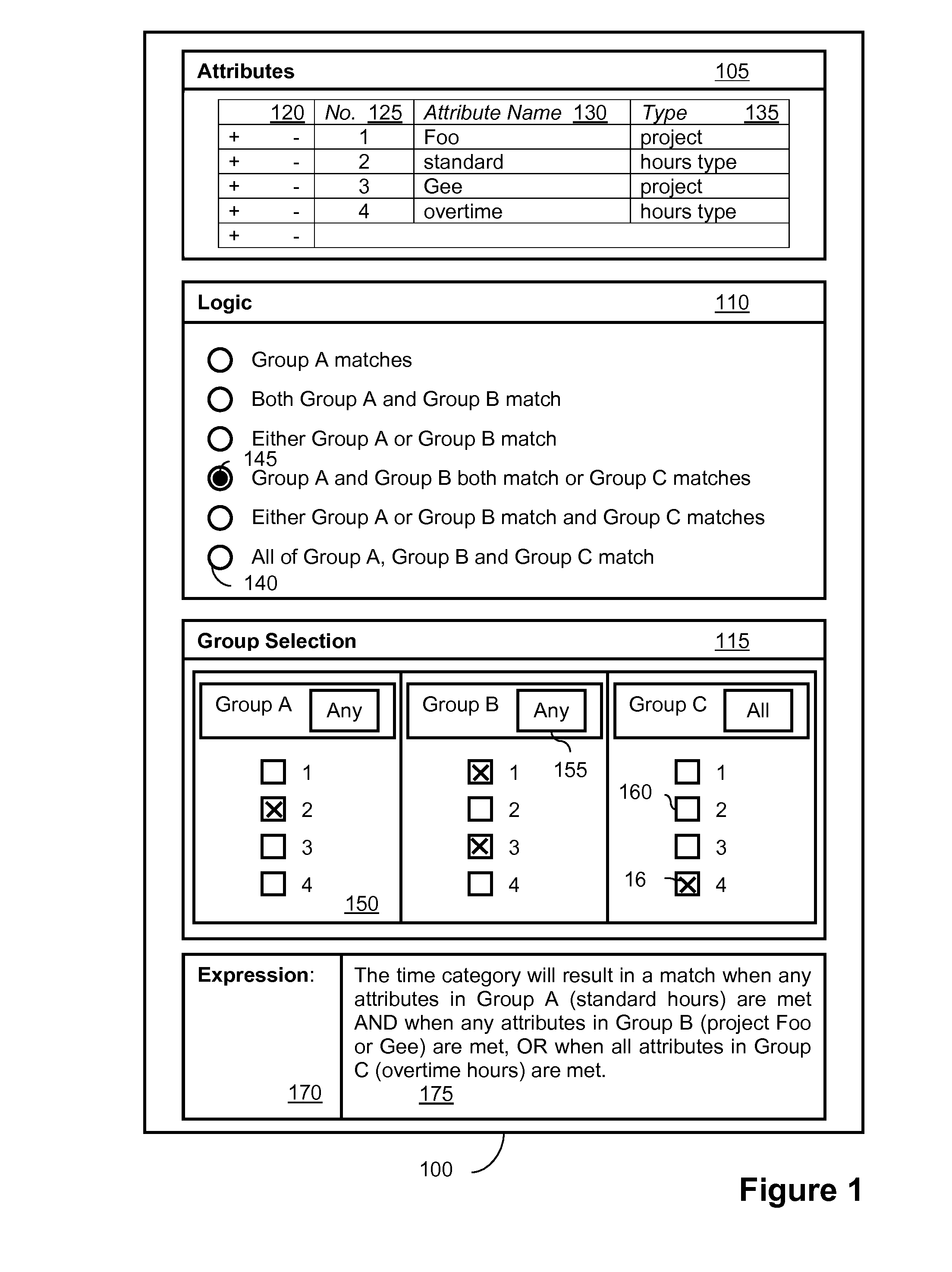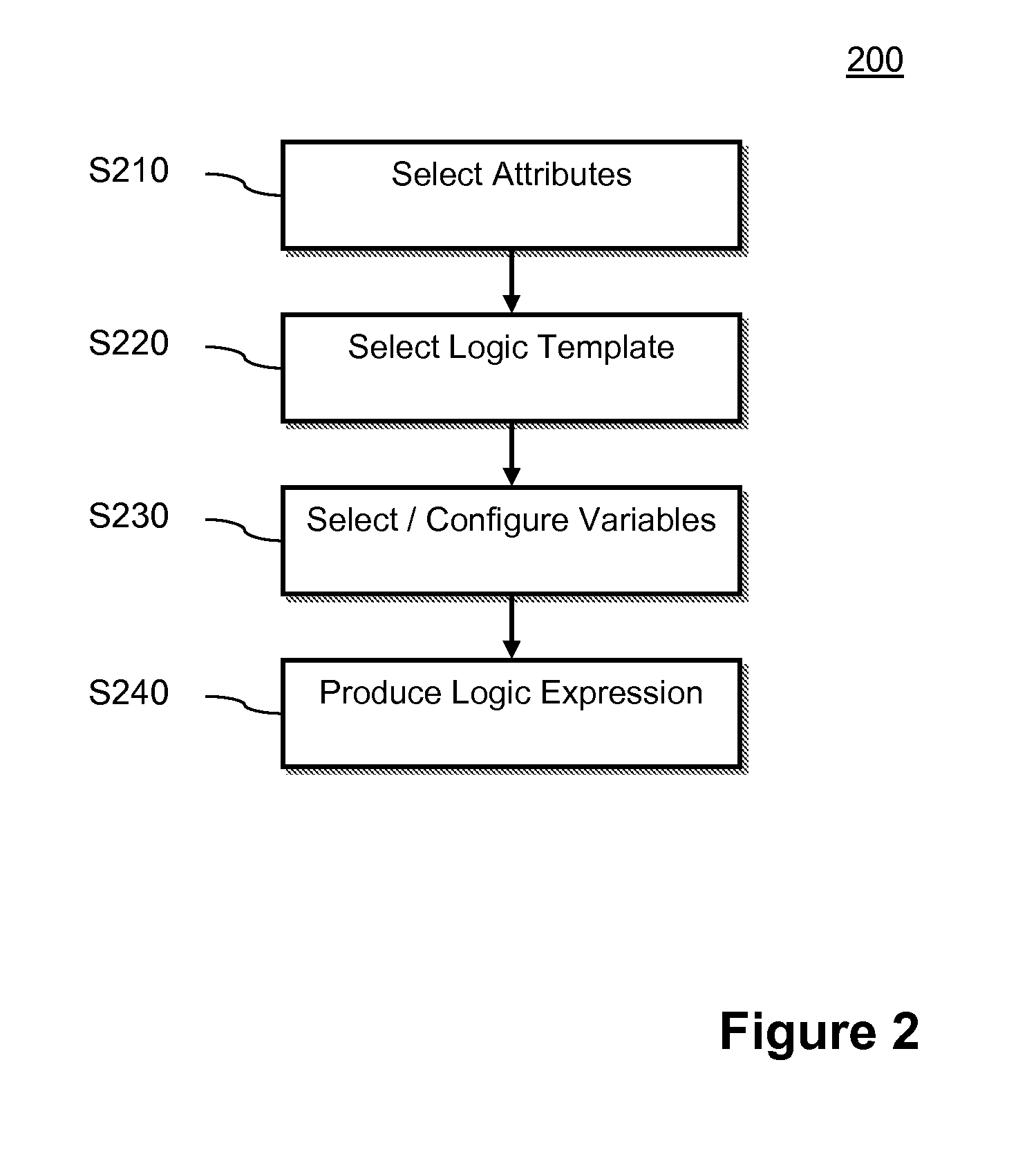Method for defining data categories
- Summary
- Abstract
- Description
- Claims
- Application Information
AI Technical Summary
Benefits of technology
Problems solved by technology
Method used
Image
Examples
Embodiment Construction
[0024]The present invention will now be described with relation to a particular example concerning data category definitions for time data, for use in a time and labor management application. However, the present invention may also be equally applied to other forms of data and data processing systems.
[0025]A functional, i.e. non-technical, user involved with the administration of a time and labor management application may wish to define a data category to be used when processing time-entry data. In the prior art, such a functional user would have required technical knowledge, including knowledge of logic operations, or would need to call upon someone with such knowledge. Furthermore, as there was no way to visualize the final logic expression that was used to define a data category, data categories were often ill-defined which lead to errors in data processing.
[0026]FIG. 1 shows an exemplary user interface 100 that may be used to implement a method of defining data categories accor...
PUM
 Login to View More
Login to View More Abstract
Description
Claims
Application Information
 Login to View More
Login to View More - Generate Ideas
- Intellectual Property
- Life Sciences
- Materials
- Tech Scout
- Unparalleled Data Quality
- Higher Quality Content
- 60% Fewer Hallucinations
Browse by: Latest US Patents, China's latest patents, Technical Efficacy Thesaurus, Application Domain, Technology Topic, Popular Technical Reports.
© 2025 PatSnap. All rights reserved.Legal|Privacy policy|Modern Slavery Act Transparency Statement|Sitemap|About US| Contact US: help@patsnap.com



